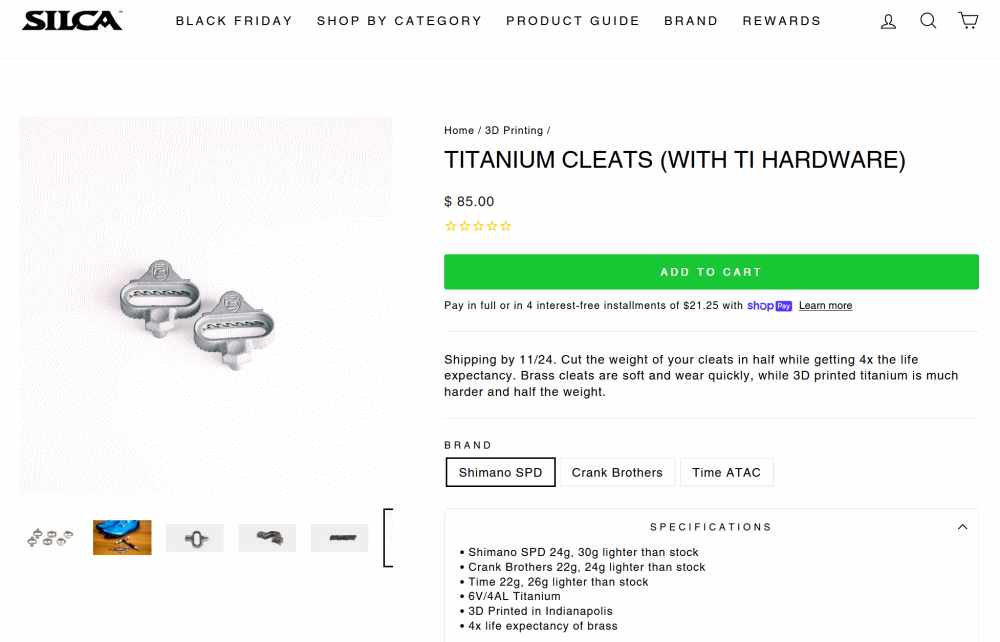I think it’s great that SILCA has decided to manufacture, er… print, titanium SPD cleats. Weight Weenies rejoice! But why dissemble in the marketing of your shiny new overpriced cycling product?
The first problem is the weight saving comparison; SILCA is claiming ““. I happen to have a scale, and have weighed many sets of Shimano SM-SH51 SPD cleats, and 9 times out of 10, they are 51g, but hey, we’ll give SILCA the benefit of the doubt and do some math against Shimano’s claimed weight of 52g.
52g-24g = 28g. So 2 fewer grams saved than SILCA claims. One could argue that it’s only 2g, but when the point of this product is to sell kit to the Weight Weenie, so those 2g of deceit are hefty in nature.
The bigger issue though is around their durability claims. I have no doubt that the SILCA titanium SPD cleat will last longer than a brass cleat of any variety. Where I take issue is with the comparison to brass cleats in the first place. Shimano SPD cleats, both the SM-SH51 and SM-SH56, are made of steel; not brass. Anyone who’s watched them rust after a salty winter ride knows this.
So why is SILCA making those claims? I suspect it’s possible that their titanium cleat is actually softer than the steel Shimano uses in its cleats. Obviously, it’s impossible for me to say for sure without knowing what kind of steel they’re using, but a quick bit of Googling puts “soft steel” @ 120 and Titanium @ 70 on the Brinell scale (higher numbers are harder materials, harder materials wear slower). I wasn’t able to find a Brinell number for the type of Ti that SILCA is printing with, so this could be way off, or it could be spot on…
So SILCA, how about you compare the product you want to hawk to the product you want to replace, and be honest about it? I think we’d all be better off.
UPDATE: It’s quite possible that SILCA made a typo in their product page and the cleat is actually made from 6Al/4V titanium, and not 6V/4AL as noted in the screenshot at the top of the post. If this is the case, it would explain why I couldn’t find the Brinell number before, and it would likely be harder than the Shimano SPD cleat. But, again, without knowing the kind of steel that Shimano is using, it’s hard to say for sure.
It’s also worth noting that if it is 6V/4AL Ti, then there is potential that the pedal will become the wear item. It’s probably not going to be an issue for Shimano SPD pedals, but other brands (e.g. Xpedo) don’t use as hard a material in their pedals. I have noticed this issue with both sets of Xpedo pedals that I use with Shimano’s SPD cleats. It would only be worse with a 6V/4AL Ti cleat.

